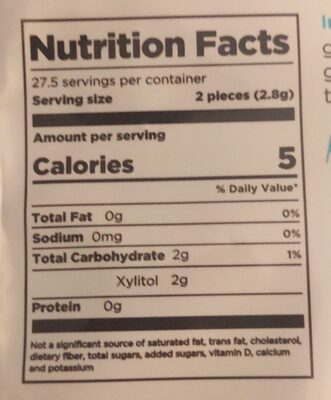Wintergreen Gum - Pur
This product page is not complete. You can help to complete it by editing it and adding more data from the photos we have, or by taking more photos using the app for Android or iPhone/iPad. Thank you!
×
Barcode: 0830028000887 (EAN / EAN-13) 830028000887 (UPC / UPC-A)
Brands: Pur
Brand owner: PUR
Categories: Snacks, Sweet snacks, Confectioneries, Chewing gum, Sugar-free chewing gum
Labels, certifications, awards: Vegetarian, Vegan
Stores: Amazon
Countries where sold: United States
Matching with your preferences
Health
Food processing
Additives
Ingredients analysis
Environment
Packaging
Transportation
Report a problem
Data sources
Product added on by usda-ndb-import
Last edit of product page on by naruyoko.
Product page also edited by kiliweb, openfoodfacts-contributors, org-database-usda, roboto-app, tmbe7, wolfgang8741, yuka.SFlJOE4vODdsNkZTaWZJbnhrelA4ZDViKzY3eVdUbnZLL013SUE9PQ, yuka.VzdzckZZQWEvOUlUd2NJZjJBN3h3ZE5xM29TU1lVRHZCOVpBSUE9PQ, yuka.sY2b0xO6T85zoF3NwEKvllBDD_funSvLZjDmvXWJxNe1JIX0W89v8I-nPas.








